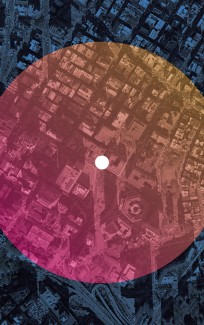UrbanIxD: Towards City Making
Urban Interaction Design: Towards City Making is an exploration of an emerging trend, closely related to the MAB14: the swift technologisation of everyday life in cities around the world. The result of this exploration is a colorful text about a phenomenon with many faces, where mobile and networked technologies blend with traditional urban theories and practices. It was created collaboratively by a group of 8 persons with different backgrounds, who nevertheless had the city as common ground.

Media Facades were only the top of the iceberg. Technology is being deployed in cities at an overwhelming speed, disrupting common paradigms of urban planning, bringing new approaches to common problems and changing the way in which we relate to each other. Be it a map of vacant spaces in New York, a guerrilla approach towards journalism in Brazil, or the mapping of Kibera, citizens around the world waste no time in adopting technologies for their own purposes, often challenging the role of experts and institutions. “Municipalities, urban developers, property owners and other established actors that embrace the classical approach to urban planning are facing the pressure of new actors wanting their hands in the pie of city making.”
This phenomenon does not only challenge traditional structures of government. It also demands new interdisciplinary approaches that can deal with its complexity.
UrbanIxD emerges as a new field related to three established ones: those focused in the urban space, those concerning technology, and finally disciplines that deal with design. Sociologists, urban anthropologists, IT specialists, interaction designers, cartographers, artists, and architects, among others, are needed to fully understand the changes that networked technologies induce in the city.
The knowledge delivered by UrbanIxD will not onlyallow the development of new platforms for cities and citizens, but also the creation of new societal forms. “It’s a field that is not just about producing services or tools that optimize urban life as it exists. An important part of it also consists of dreaming up alternative futures. The latter is of great importance. The rise of new media technologies opens up opportunities for citizens to organize themselves in communities or political movements to improve their cities.”
Many of the persons involved in the creation of “Urban Interaction Design: Towards City Making” will be visiting the MAB14 to continue discussing how media, technology—and most importantly—citizens, continue to shape the cities of the world.



































